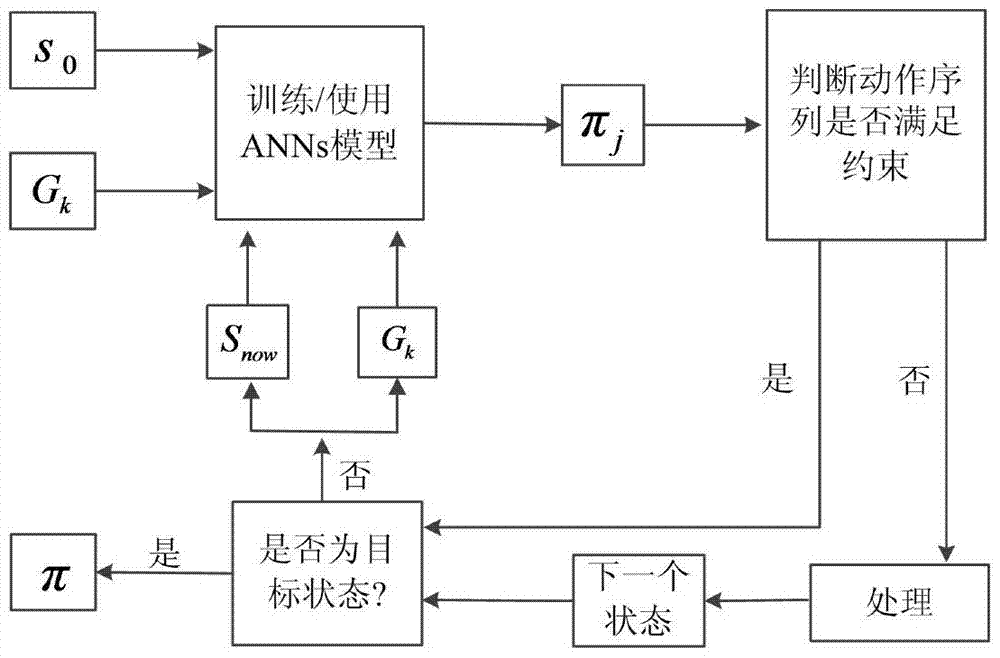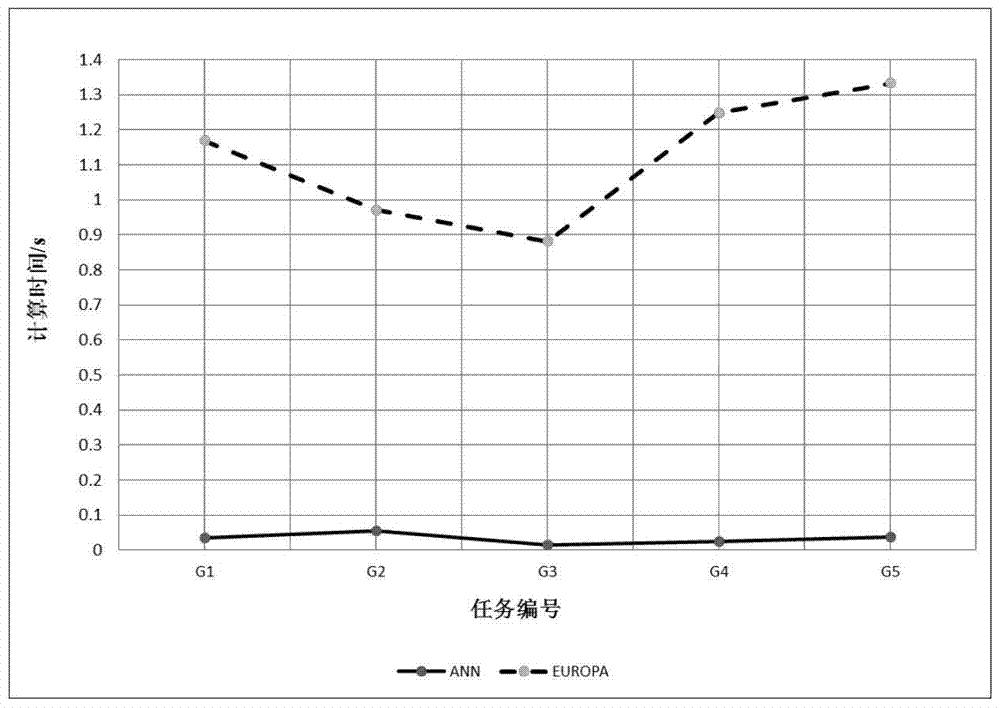A neural network-based autonomous mission planning method for deep space probes
A deep space detector and neural network technology, applied in the field of autonomous task planning of deep space detectors, can solve problems such as design heuristic difficulties, slow planning speed, large search space, etc., to meet real-time requirements, improve efficiency, high efficiency effect
- Summary
- Abstract
- Description
- Claims
- Application Information
AI Technical Summary
Problems solved by technology
Method used
Image
Examples
Embodiment Construction
[0040] The purpose of the present invention is to propose a neural network-based autonomous task planning method for the current deep-space detector autonomous task planning problem, which is a method that meets the real-time requirements of the detector under the condition that multiple subsystems need to be coordinated.
[0041] The present invention is realized by designing a neural network model, and its process is as follows figure 1 As shown, the specific implementation steps are as follows:
[0042] Step 1, establish the system model of the deep space detector.
[0043] The deep space probe has five subsystems, namely navigation system, propulsion system, attitude system, communication system and camera system.
[0044] sys={sys 1 ,sys 2 ,sys 3 ,sys 4 ,sys 5}
[0045] The active state of the detector refers to the state that the subsystem may be in, for example, the camera system may be in the off state, and the state set of the i-th system is Then the state se...
PUM
 Login to View More
Login to View More Abstract
Description
Claims
Application Information
 Login to View More
Login to View More - R&D
- Intellectual Property
- Life Sciences
- Materials
- Tech Scout
- Unparalleled Data Quality
- Higher Quality Content
- 60% Fewer Hallucinations
Browse by: Latest US Patents, China's latest patents, Technical Efficacy Thesaurus, Application Domain, Technology Topic, Popular Technical Reports.
© 2025 PatSnap. All rights reserved.Legal|Privacy policy|Modern Slavery Act Transparency Statement|Sitemap|About US| Contact US: help@patsnap.com



